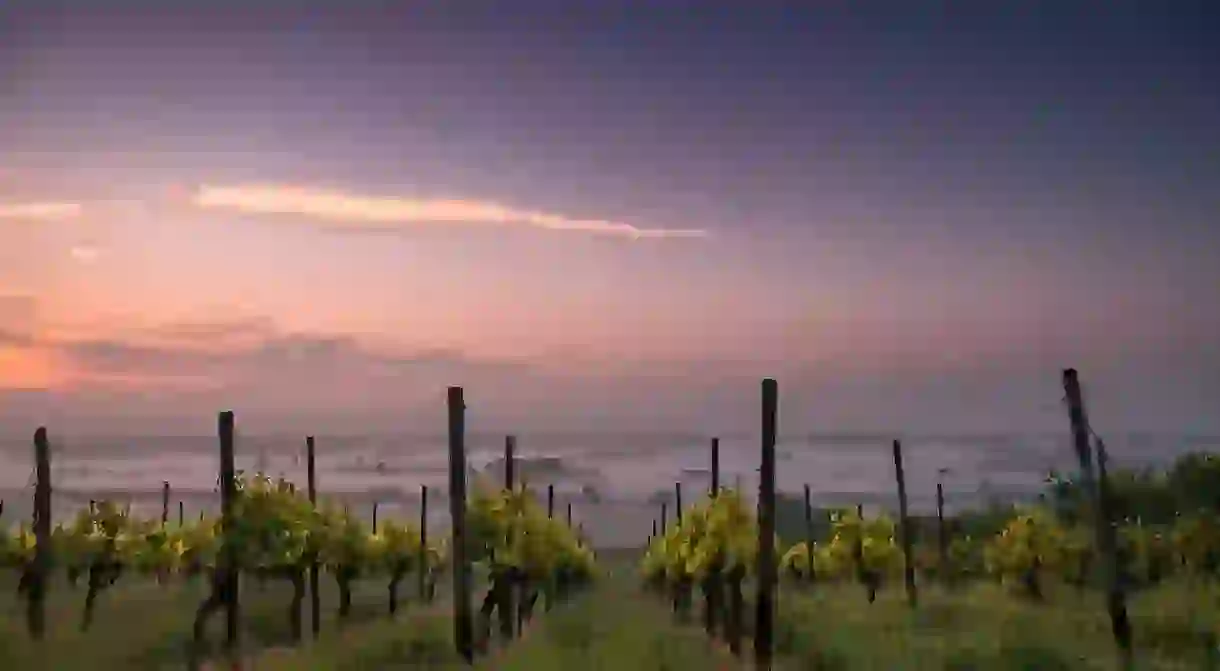A Wine-Tasting Tour of Tarija, Bolivia

Travelers say they fall in love with Tarija for its leafy plazas, colonial buildings and warm climate. But there is another reason why this charming Mediterranean town never fails to captivate new visitors. Wine, and lots of it. Join us on a tour of La Ruta del Vino to discover this high-altitude epicenter of the Bolivian wine industry for yourself.
There are a number different ways to visit Tarija’s vineyards, most of which are situated just outside the city in a spot known as Valle de Concepción. The cheapest method is to flag down a bus and make a beeline straight for your favorite bodega (winery). The downside is that many vineyards open and close sporadically, and there would be a lot of waiting around involved. Those looking to combine excessive day-drinking with a little exercise can hire a bike and map out their own route. Most people, however, just cough up the 100 BOB (US$15) it costs for a private minivan tour, which visits two industrial and one boutique vineyard over the course of four hours.

Kohlberg
Wine Bar, Bodega, Wine, Beer
As Bolivia’s largest producer, the Kohlberg bodega is certainly picturesque. Unfortunately, however, it seems the company values quantity over quality, because despite being in the business for over 50 years there isn’t much good to be said for their product. If you do end up here, opt for the whites, which easily out perform the reds.
Aranjuez
Another big Bolivian player, Aranjuez make the best mass-produced wine in the country. Particularly good at tannats, the company offers three pricing tiers, which have raked in numerous awards over the years. Be sure to take home a bottle of Duo – half tannat, half merlot; at only five bucks a pop it’s an absolute steal. Visitors are currently not allowed on-site, although that should change midway through 2017.
Campos de Solana
Campos de Solana is a large, premium brand with a tourist-friendly vineyard where staff do their utmost to promote the product. Try the rosé, which goes down a treat in the warm Tarija sun. Their big claim to fame, however, is the Trivarietal, winner of numerous international awards and arguably Bolivia’s finest drop.
Casa Grande
Bodega, Wine

Casa Grande is a mid-sized operation that specializes in making some damn fine reds. They’ve won several awards over the years and their bodega has recently begun including ethno-tourism initiatives alongside the usual tasting and vineyard tours.
Casa Real
Casa Real actually make Singani, a type of distilled-grape brandy, rather than wine. Be sure to get stuck into their free sample of Chuflay, a delicious cocktail consisting of top-shelf singani, 7-up and lime served in a tall glass. Singani is the national liquor of Bolivia and is traditionally consumed in large quantities at every possible opportunity.
Casa Vieja
Restaurant

More popular for its colonial-era charm than the wine itself, Casa Vieja is a 400-year-old adobe compound that still makes wine the same way it was done back in the good old days. The boutique vineyard only produces vino paterno (foot-crushed wine), which is interesting but might not be to everyone’s taste. On the plus side, the tasting portions are enormous and there is a nice restaurant out the back which serves hearty Bolivian fare to soak up all that booze.













